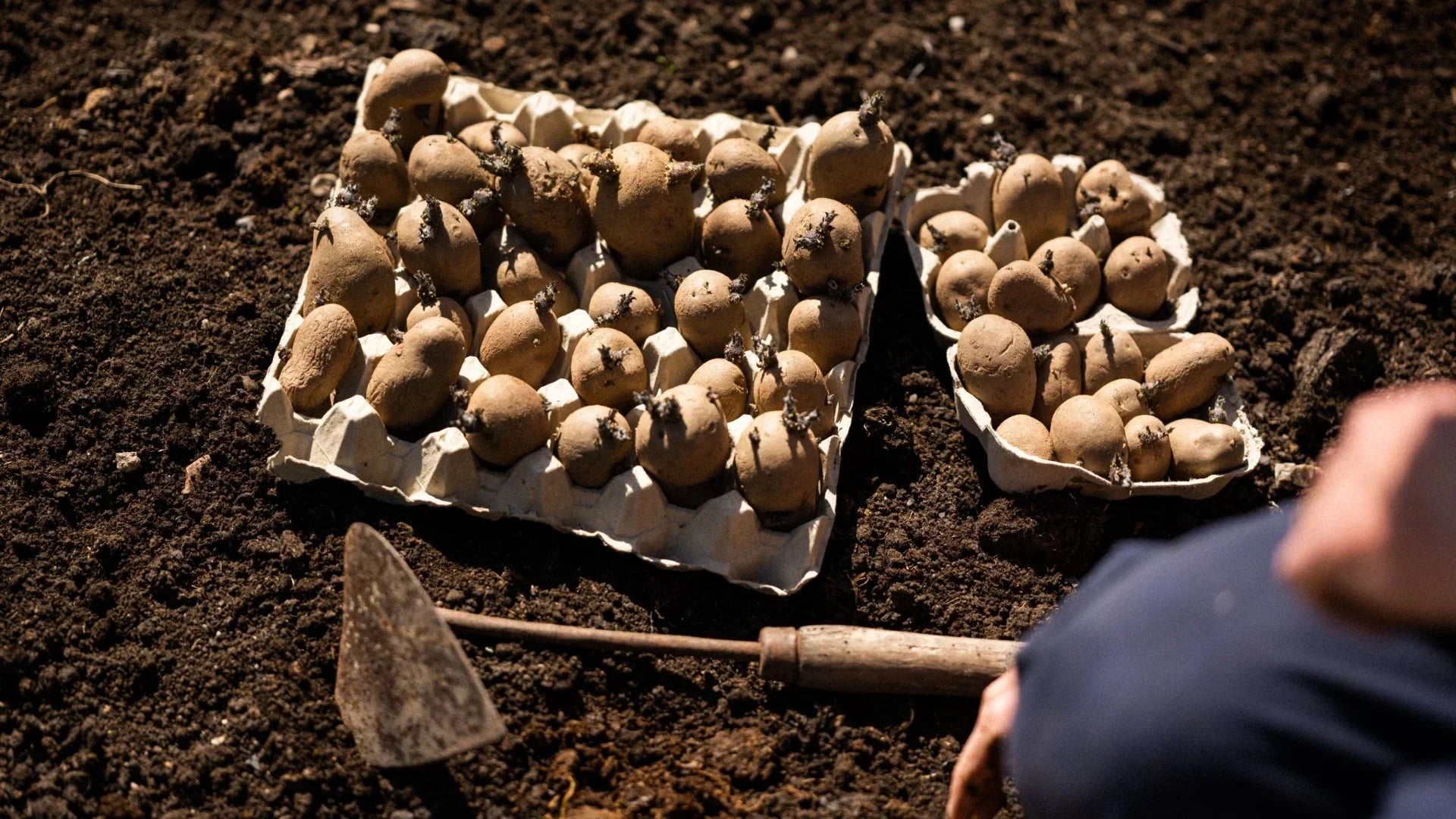The type of soil in your garden has a huge impact on which plants thrive or struggle. Understanding the different types of soil, their strengths and the challenges they present to gardeners, can help you plan a bountiful garden that will flourish.
The most common soil-types in the UK are: clay, sandy, silty, loamy and chalky. In this article, we’ll take a look at these, and help you understand how to work with the soil you’re dealing with.
Clay soil
Clay soils are nutrient rich, but with smaller particles than other types, they get sticky when wet and will crack when dry. Because it drains very slowly, clay soil won’t be great for plants that are very sensitive to getting waterlogged. And unlike sandy soil, clay soil takes a while to warm up in the Spring.
Cultivate clay soils in the autumn, adding organic matter as you go. The RHS also recommends digging in bulky matter, such as bark, that will help the soil to drain better. But when working with it, be ready for a workout: digging in clay soil is harder and heavier than in some other soil types.
Because it retains nutrients so well, while harder to work with, with the right choice of plants it can still be a great foundation for growing. Trees, shrubs, climbers and roses often do well in clay soil. The plants to avoid are ones that need regular moving or dividing, because roots will break more easily in the heavy clay. Some gardeners advise planting in small mounds on clay soil, to avoid waterlogging around roots.
Clay soils can become extremely compacted when walked on when wet. Be careful not to stand where you’re planning to plant, and if your lawn is on clay, consider creating a path rather than treading across the lawn on wet days.
Sandy soil
All the challenges of clay are solved with sandy soil, but the flipside of that coin is a different set of challenges. Sandy soil has larger particles, so it drains well, is lighter to work with and is much easier to cultivate. However, it doesn’t hold nutrients as well and will dry out much faster.
Adding well-rotted manure and other organic matter to sandy soil will increase nutrient content, and mulching will help retain moisture.
If your garden is full of sandy soil, choose plants that will thrive in dryer conditions. Lavender, buddleia, verbena and geraniums are regular favourites for sandy soil gardeners.
Silt Soil
Right in between sand and clay, is silt. The particles are larger than clay, but smaller than sand, and this means that silty soil retains some moisture but is still easier to work with. Silt also retains more nutrients than sand. The downside is that, like clay, it can get easily compacted. It can also be washed and eroded by wind.
It’s very rare to find purely silt soils in gardens. Rather, silt will be a component in other types of soil.
As with all soils, adding organic matter helps silty soil, as does mulching. Because silt is so nutrient-rich, it can be extremely fertile for planting.
Loam soils
Loams are blends of those other types of soil, and are a gardener’s best friend. They combine the nutrients and moisture-holding properties of clay, the drainage and malleability of sandy soils. Different blends will be right for different types of plants: clay loams will have a higher percentage of clay, and sandy loams will have more sand. No matter the make-up of the loam, it will still benefit from adding organic matter.
Chalky soil
Chalky soils are extremely common in the UK, and because of the chalk or limestone in the soil, are very alkaline. Organic matter can be added, but attempts should not be made to increase the acidity of the soil artificially. If your garden soil is chalky, seek out Mediterranean and prairies plants, that thrive in alkaline soils – and be ready to grow in containers if you’re craving plants that need more acidic conditions.
Chalky soil drains well, but is often very shallow. This means that adding topsoil is a common solution for gardeners wanting to plant into chalky conditions.
Testing your soil
The first step of improving the chances of growing in your soil, is to know what your working with. So, get your hands into the soil, and see how it feels.
If you can feel the rough texture of the particles, and when wetted the soil is mouldable but doesn’t keep its shape, it is sandy.
If it becomes slipper when wet but doesn’t keep a shape, it’s silt.
If you can roll it into a shape and it stays that way, it’s clay.
Loam soils will vary depending on the composition of the different elements.
Chalky soil may have small lumps of chalk or lime in it, and the ultimate test is to put some in a glass of vinegar: if it froths, it is chalky.
If you want to know more about the make-up of your soil, for example before choosing which plants to grow, you can buy home soil testing kits that are easy to use.
Managing your soil type
Once you know what you’re dealing with, you can make plans to address the challenges your soil type presents. Clay will need drainage solutions, and strategies to avoid compacting. Silt will need protection from the elements. Sandy soils will need moisture and nutrient retention measures. Clay may benefit from a layer of topsoil. Absolutely all of them benefit from the addition of organic matter.
Taking soil type into account as you choose what to plant will make it easier for you to successfully grow plants in your garden. Local garden centres may offer advice on the plants and variants that thrive in your area. Sometimes just taking a walk and seeing what is flourishing in neighbours’ gardens can give you inspiration for flowers and vegetables that may also grow well for you. If your soil really isn’t workable for the garden you’d like to create, raised beds and containers can be blank slates to start planting in.




